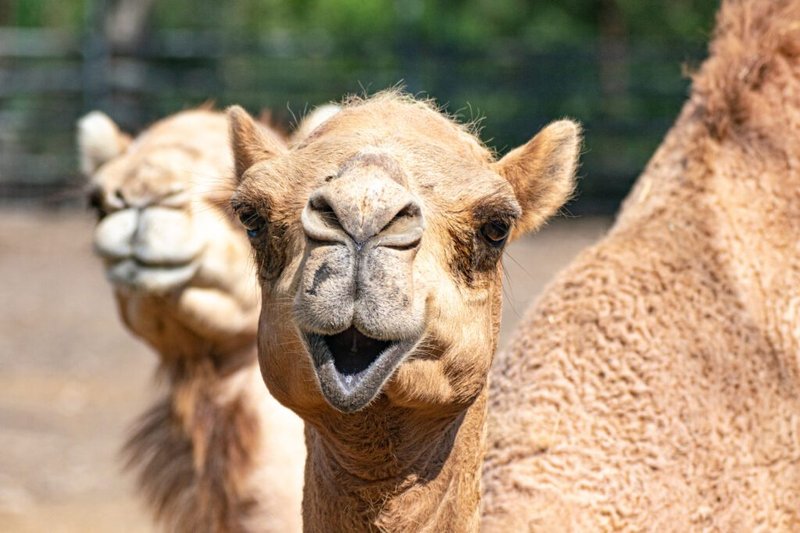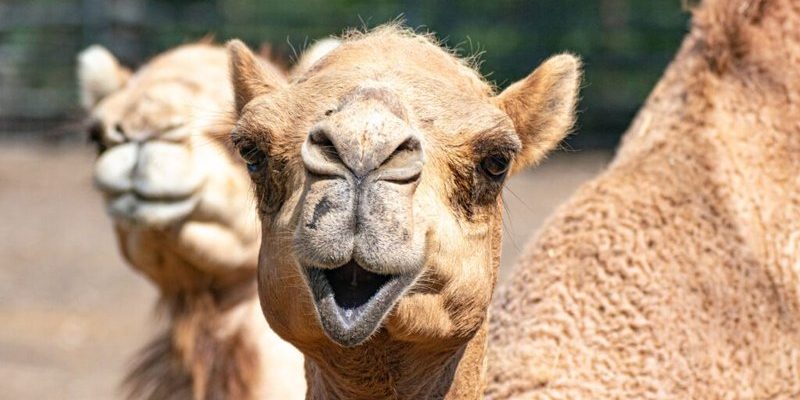
Let’s grab a cup of coffee and delve into the details of what makes the dromedary’s lifestyle so unique. These animals have more than a few tricks up their sleeves when it comes to finding food and conserving water. Just like how we scout out the best coffee shops in town, dromedaries are skilled at searching for nutrient-rich plants and remaining hydrated—even in the hottest conditions. So, how do they do it?
Understanding the Dromedary’s Diet
Dromedaries are herbivores, primarily feeding on a variety of plants that grow in arid regions. Their diet mainly consists of dry grasses, shrubs, and the occasional succulent. Here’s the thing: they’ve developed a taste for plants that others might avoid, thanks to their unique digestive system.
- Dry Grasses: These plants are often tough and fibrous, but dromedaries have strong, specialized teeth that help them chew through the tough material.
- Leaves and Shrubs: In addition to grasses, they enjoy the leaves of certain shrubs which can be more nutritious and moisture-rich.
- Saltbush: This is a popular choice due to its high salt content, which actually helps dromedaries retain water.
Dromedaries are often seen munching on whatever they can find during the day, using their long necks to reach even the tallest plants. Their tough mouths can handle thorny plants, allowing them to utilize a wider range of food sources. It’s like being a gourmet eater in an all-you-can-eat buffet—except this buffet is filled with desert plants!
Water Conservation Strategies
In the blistering heat of the desert, staying hydrated can be a challenge. Dromedaries are remarkable in how they manage their water intake. Rather than drinking large amounts of water regularly, they can tolerate a significant loss of body fluid—up to 25%—before it impacts their health. Here’s how they do it:
– Efficient Drinking Habits: When they do find water, dromedaries can drink up to 40 gallons in one go! Their bodies are designed to absorb moisture quickly, which is essential for survival in dry areas.
– Metabolic Water: Dromedaries produce water internally through their metabolism by breaking down fat stored in their humps. It’s like making lemonade when life gives you lemons—only, they’re turning fat into hydration!
– Minimizing Water Loss: Their body temperature can fluctuate, allowing them to avoid sweating during the hottest parts of the day. This is a smart energy-saving tactic, much like wearing a light jacket instead of a heavy coat in warm weather.
Each of these strategies helps dromedaries thrive in a landscape that would challenge most other animals. Their adaptations are nothing short of impressive!
Hunting Strategies: Foraging for Food
Now, you might be wondering why we’re talking about hunting when dromedaries are herbivores. Well, their “hunting” is actually all about foraging. They’ve developed keen skills to find and exploit food in their environment.
Dromedaries have excellent senses, especially their vision and sense of smell. They can spot greener patches of vegetation from a distance, making it easier to navigate the desert. When it comes to foraging, it’s almost like having an internal GPS that directs them to the most nutritious sources of food.
They also use their long legs to travel long distances, allowing them to cover vast areas in search of food. Think of it as a scavenger hunt where they’re always on the lookout for their next meal. This mobility is crucial, especially since food sources can be scarce in the desert.
Symbiotic Relationships with Other Species
Dromedaries also benefit from relationships with other creatures in their habitat. These interactions can be quite fascinating. For example, they often share their environment with various insects and birds that can help them spot food. Here’s how these symbiotic relationships work:
– Birds and Insects: Certain birds follow dromedaries and feed on insects that bother them. This not only gives the birds a meal but also keeps the dromedaries more comfortable.
– Seed Dispersal: In return for their grazing habits, dromedaries help in seed dispersal. As they munch on plants, they inadvertently transport seeds through their dung, helping new plants to grow in other areas.
These relationships emphasize the balance in nature and show how different species can help each other thrive, especially in challenging environments like the desert.
The Influence of Climate on Dromedary Diets
The climate plays a significant role in shaping the diet and feeding behaviors of dromedaries. Seasonal changes can affect what is available for them to eat. During particularly dry months, they tend to graze on tougher plants, while in wetter seasons, they may have access to softer, more nutritious vegetation.
Dromedaries are known for their adaptability. As conditions change, so do their diets. It’s similar to us switching up our menus based on seasonal produce. When the rains come, dromedaries can take advantage of the explosion of new plant life, making it a feast for them!
Unfortunately, climate change poses a threat to their habitats. Rising temperatures and shifts in rainfall patterns can lead to food scarcity. Dromedaries are resilient, but ongoing changes in their environment could challenge their survival strategies over time.
Cultural Significance and Human Interaction
Dromedaries have been close companions to humans, especially in Arabian cultures. Their ability to provide sustenance in terms of milk and meat, along with their role in transportation, makes them integral to desert life. Here’s a look at their cultural significance:
– Milk Production: Dromedary milk is nutritious and a staple in many desert communities. It’s rich in vitamins and is easier to digest than cow’s milk, making it a valuable food source.
– Transportation: Historically, dromedaries have been used for travel and trade across deserts, allowing commerce to flourish in some of the most rugged terrains.
Their presence in human life highlights a unique bond between species—one that has adapted and evolved over the centuries.
The dromedary is a remarkable example of adaptation in a harsh environment. Through efficient foraging, clever water conservation strategies, and a deep connection with the ecosystems around them, these camels have proven their resilience. They showcase how every living creature plays a role in the balance of nature, making them not just fascinating animals to observe, but essential players in their habitats.
Next time you picture a dromedary set against the backdrop of vast deserts, remember it’s not just about the hump; it’s about survival, cleverness, and the unexpected connections they form in their quest for sustenance. The dromedary truly is a marvel of nature, and understanding their diet and hunting strategies gives us a glimpse into the beauty of life in the desert.

